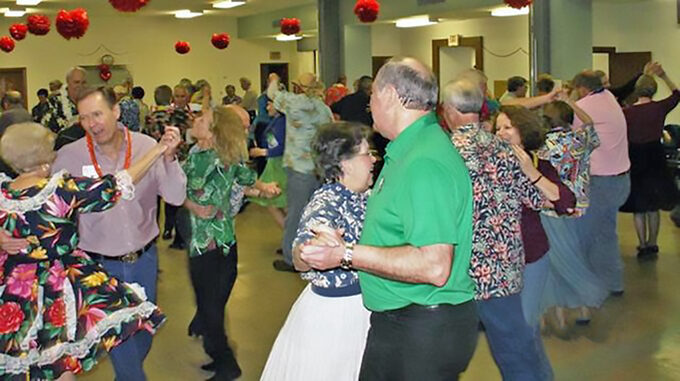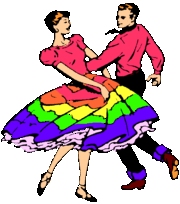Square Dance History
The American folk dance, Square Dancing, has two ancestors; one is English and one is French. Many of our figures came from them. As the United States moved westward, so did Square Dancing, and the dance took on the style of each new area.
Country Style Square Dancing in the late 1800's and early 1900's received a very bad name because it was danced in places where drinks were served and the dance usually became rowdy and uncontrollable. People could not dance the figures except with their own group. This was a time before microphones; there was a caller in each square calling the figures. The music was provided by a fiddle, a guitar or maybe a banjo.
Henry Ford, the maker of the first automobile, loved to Square Dance. He built a hall for his employees to have a Square Dance club. In 1926 his book, "Good Morning," consisting of dance figures, was published.

In the 1920's Dr. Lloyd "Pappy" Shaw came on the scene and brought square dancing out of its dark age. He traveled to dances all over America and wrote down the figures and patterns. He formed the Cheyenne Mountain Dancers who traveled around performing and inspiring people who wanted to learn to Square Dance.
In 1939 he published a book, "Cowboy Dances." The callers learned the same dances and figures, which allowed people to dance in different areas.
Microphones and the turntable changed Square Dancing the most. This led to Modern Square Dancing, where we have records and there is only one caller for each dance. Today we have many organizations to unite dancers so they can dance in any state or country. If a dancer travels to a foreign country he will be able to dance. The calls don't translate to other languages so they are always in English, although they may be pronounced with the country's accent.
Why Square Dance?

It's good, clean, wholesome fun for the whole family!
There is no smoking or drinking at square dances and people of a variety of ages dance.
It's great exercise!
Each dance is 9,000- 10,000 steps and burns 200- 400 calories per half-hour of dancing. That's equal to taking a 4-mile hike.
It's a stress-reliever!
While you're dancing, you're focused on listening to the caller's instructions and interacting with the people in your square. You won't be thinking about your worries, and you won't be lonely at a square dance!
It's easy!
If you can walk, you can square dance. It may look complicated but it really is several simple moves called in a pattern.
It's a great way to meet people!
New to town? Make new friends in a relaxed, social atmosphere.
